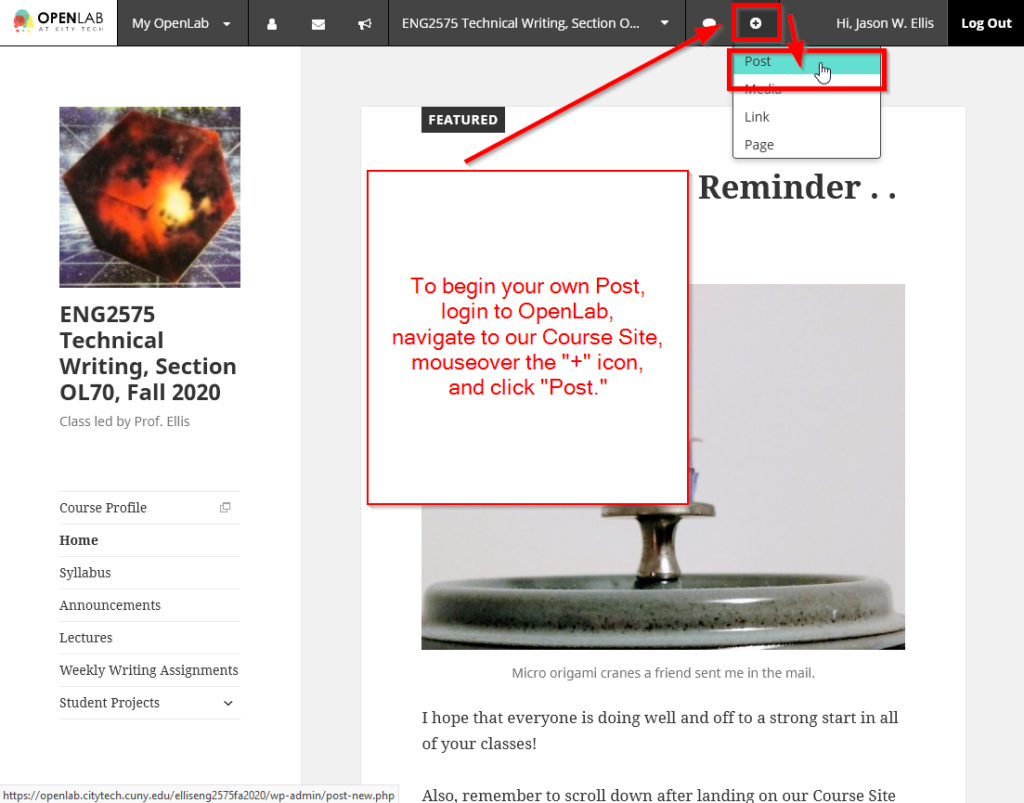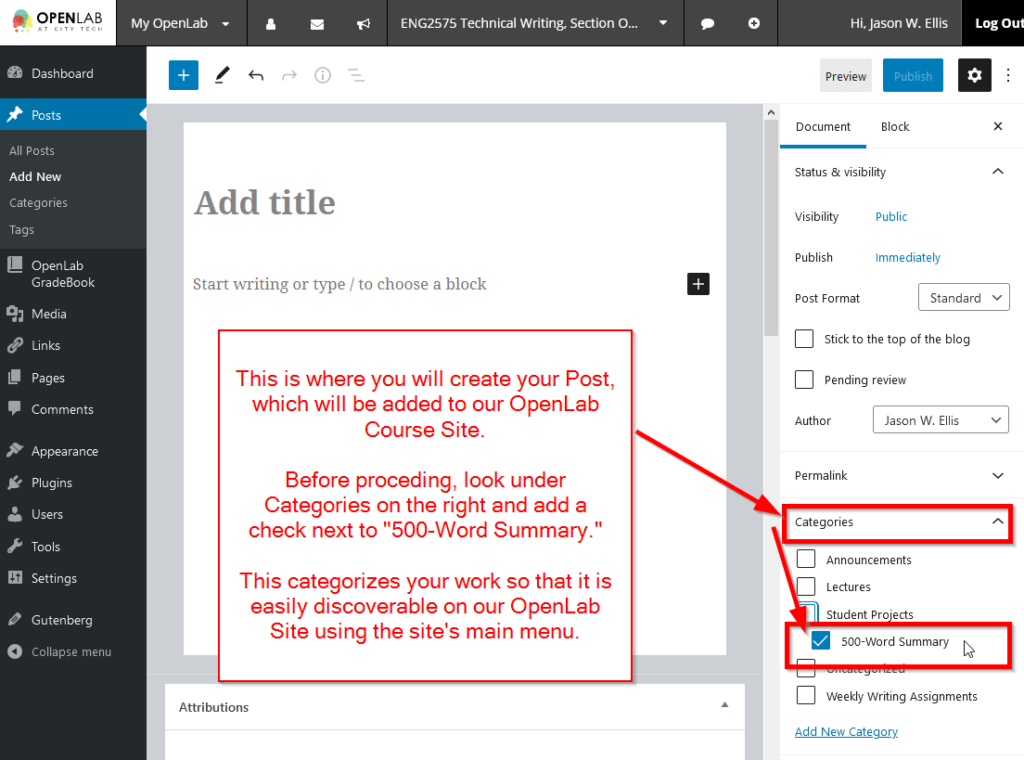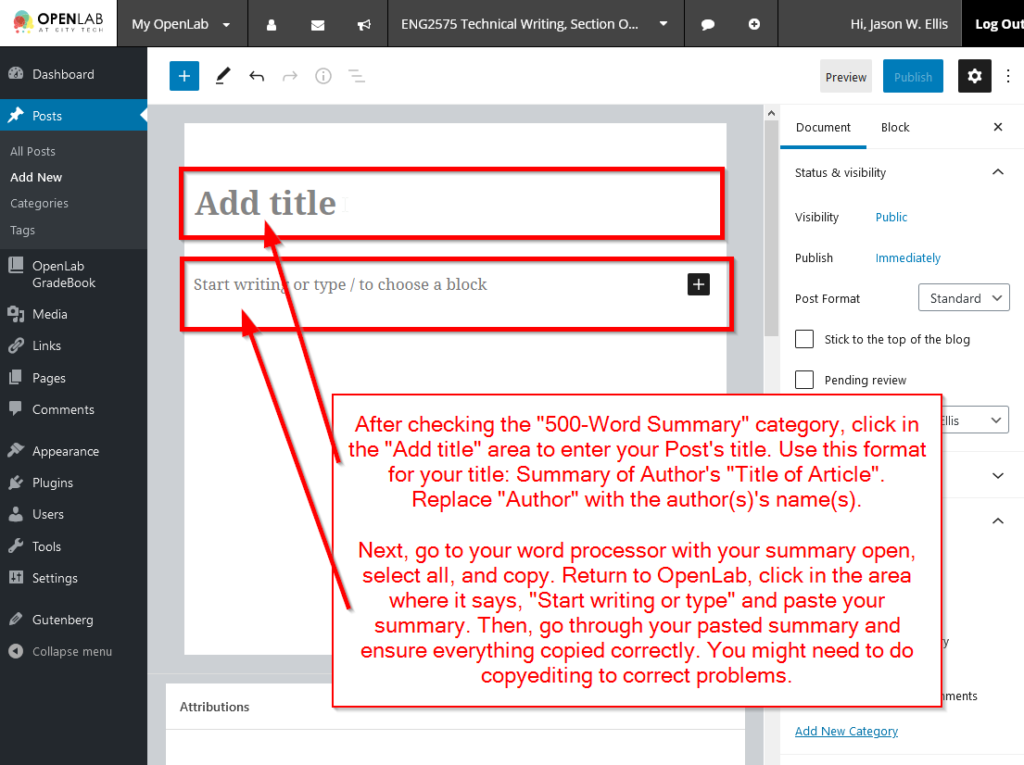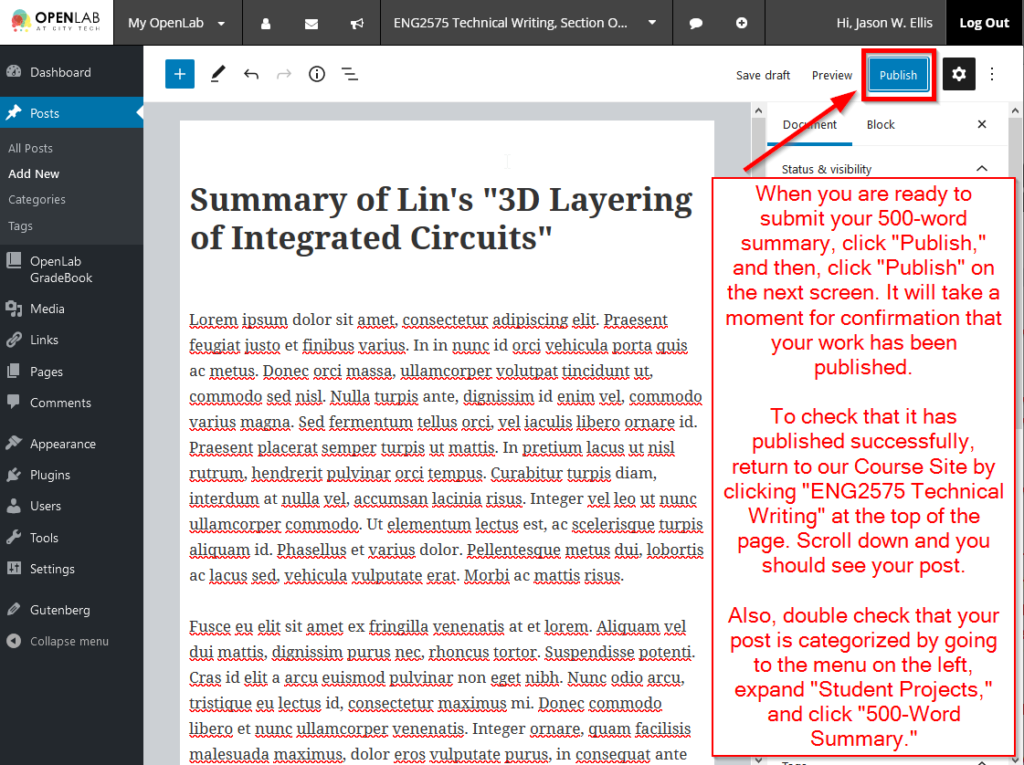As discussed in the lecture this week, this week’s homework on the 500-Word Summary project is to transform the reverse outline that you wrote last week into a first draft that you will share with your team and Prof. Ellis as a part of next week’s homework (I will cover this in the Week 3 Lecture).
In the Week 2 lecture above, I show how to format your 500-Word Summery as a memo, add an introductory topic sentence, add a road map sentence, incorporate a quote and citation, and add a reference in APA format at the end of the document. The example that I created in the lecture is included below for your reference.
After you have completed your first draft, save a copy and be ready to circulate it next week after I assign teams. When you share your work, your teammates will provide feedback and Prof. Ellis will see your work. I will explain this more next week.
TO: Prof. Ellis
FROM: Your Name
DATE: 3/3/2021
SUBJECT: 500-Word Summary of Article About Virtual Reality
The following is a 500-word summary of a peer-reviewed article about tracking human bodies in virtual reality. The authors discuss the body tracking software that they developed called Pfinder by showing how the software was developed, tested, and improved. According to the authors, “To address this need we have developed a real-time system called Pfinder (“person finder”) that substantially solves the problem for arbitrarily complex but single-person, fixed-camera situations” (Wren et al., 1997, p. 780). Lorem ipsum dolor sit amet, consectetur adipiscing elit. Vestibulum at porttitor neque. Nullam dapibus pulvinar hendrerit. Etiam elementum ipsum quis elit aliquet tincidunt. Aliquam dui augue, tempor quis pretium et, fermentum et dolor. Praesent sit amet velit et ligula iaculis vulputate. Nulla facilisi. Aliquam lobortis pulvinar rhoncus. Aliquam neque sem, tincidunt sollicitudin ante gravida, congue pretium odio. Nullam in vestibulum tellus, accumsan dignissim dolor. Sed convallis nisl vel venenatis sagittis. In eu turpis risus. Phasellus ac rhoncus est. [The body should be 500 words long +/- 20 words.]
Reference
Wren, C. R., Azarbayejani, A., Darrell, T., & Pentland, A. P. (1997). Pfinder: Real-time tracking of the human body. IEEE Transactions on Pattern Analysis and Machine Intelligence, 19(7), 780-785. https://doi.org/10.1109/34.598236







